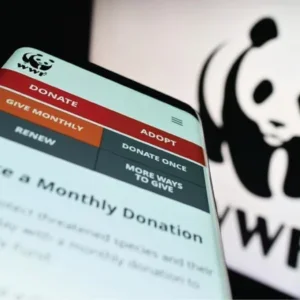The leather industry is facing an increasing shortage of hides because some companies are exporting the critical raw material at the expense of the local market. Carlos Touguinha, chief executive officer of lmponente Tanning, said a shortage in the supply of basic and quality hides was the industry’s major problem.
Touguinha is the first chairman of the Leather and Allied Industries Federation of Zimbabwe (LAIFEZ), formed only last year. He said: ‘Zimbabwe consumes between 30 to 40% of its hides; the rest are exported as raw materials, wet-blue or finished leather.’ Wet-blue accounts for most the industry’s problems and shortages.
‘New tanneries in exporting processing zones (EPZ) are selling hides in the wet-blue stage when we have many orders for finished goods. It does not make sense. Wet-blue has less value than processed hides. All wet-blue tanneries in the country employ only about 20% of what a full-scale tannery employs. This is depriving the country of the much needed foreign currency’, he said.
He added that the shortages of hides was further worsened by the inability of large commercial farmers – who used to supply the industry with hides – to supply following the government’s land reform process. The remaining farmers have reportedly destocked their livestock.
Touguinha said tanneries are calling for a level playing field after the government awarded all new tanneries EPZ status. Tanneries in the export processing zones are exempt from paying foreign currency to the government while the old tanneries are required to remit 40% of their export earnings.
Touguinha said the leather industry association has since approached government and requested a system whereby tanneries in the wet-blue industry are granted export licences only if they can prove they supply 50% to the local market.
‘We agreed with government last year in July that 50% of hides have to remain in the country. Unfortunately, this is not working. There are currently ten operators involved in the export of wet-blue and these companies have absolutely nothing to do with the leather industry.
Touguinha said the wet-blue trade was growing at a fast rate of about 25% every year. Zimbabwe’s tanneries need about 34,000 tonnes of hides per month but out of this they are getting only 50%, about 17 to 20,000 tonnes, which is not enough for the industry’s needs.
Said Touguinha: ‘Because of raw material shortages we have orders for as far back as November last year which we cannot deliver. We are still to deliver orders for this year. Our aim as an industry is to grow not by making wet-blue but by making value-added leather products. We need cooperation from government because if we do not get hides we will fall.’
A growing furniture industry is one of the major consumers of leather products in Zimbabwe. Outside South Africa, Zimbabwe has the biggest upholstery market in Africa. The leather industry has ready export markets in Italy, Australia, South Africa and some countries in the Far East.
Imponente say their finished export goods have doubled because of the South African market. Exports there are expected to quadruple this year. Last year, the company earned US$I.4 million from exports to Italy alone. It is anticipated this figure will not change this financial year.
‘We are expanding quite rapidly into the export market, especially South Africa, which we feel we have neglected for a long time, But we are also gaining a foothold on the Australian market. Last year, even without enough hides, our production capacity rose by 17%. We would like to keep this trend but a lot depends on hides’, he said.
Imponente expect turnover to reach the $1.5 billion mark this year, compared with $850 000 million recorded last year. Export earnings amounted to $250 million. Despite shortages, the company plan to recruit more workers this year as the tannery ups production capacity.






